اتفاية ترسيم الحدود البحرية مع قبرص
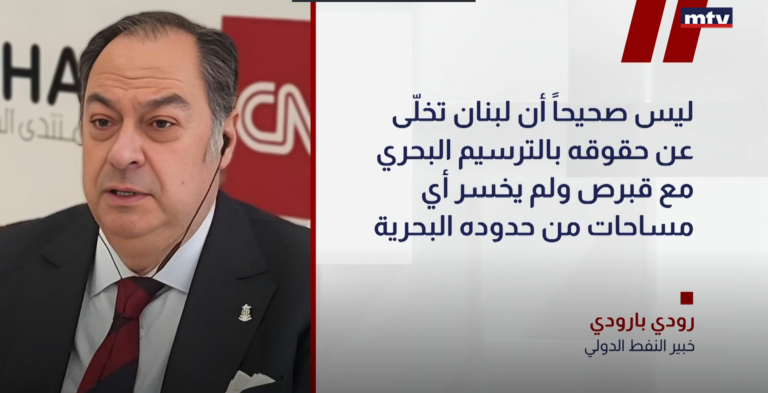


The upcoming UN Climate Change Conference (COP30) will be the first to take place in the Amazon, sending a powerful symbolic message about the central role developing economies must play in the global response to the climate crisis. But at a time of geopolitical fragmentation and low trust in multilateralism, symbolism is not enough. Developing economies must plan and propel the green transition. Africa is no exception.
So far, Africa’s climate narrative has been one of victimhood: the continent contributes less than 4% of global greenhouse-gas emissions, but it is highly vulnerable to the effects of climate change. This disparity fuelled the calls for “climate justice” that helped to produce ambitious climate-financing pledges from the industrialised economies at past COPs. But with those pledges going unfulfilled, and Africa’s climate-finance needs rising fast, moral appeals are clearly not enough.
A shift to a more strategy-oriented discourse is already underway. The Second Africa Climate Summit (ACS2), which took place in Addis Ababa last month, positioned the continent as a united actor capable of shaping global climate negotiations. It also produced several initiatives, such as the Africa Climate Innovation Compact and the African Climate Facility, that promise to strengthen Africa’s position in efforts to ensure a sustainable future.
Instead of continuing to wait for aid, Africa is now seeking to attract investment in its green transition, not because rich countries “owe” Africans – though they do – but rather because Africa can help the world tackle climate change. But success will require progress on four fronts, all of which will be addressed at COP30.
The first is the cost of capital. Because systemic bias is embedded in credit-rating methodologies and global prudential rules, African countries face the world’s highest borrowing costs. This deters private capital, without which climate finance cannot flow at scale. While multilateral development banks (MDBs) can help to bridge the gap, they typically favour loans – which increase African countries’ already-formidable debt burdens – rather than grants.
At COP29, developed economies agreed to raise “at least” $300bn per year for developing-country climate action by 2035, as part of a wider goal for all actors to mobilise at least $1.3tn per year. If these targets are to be reached, however, systemic reform is essential. This includes changes to MDB governance, so that African countries have a greater voice, and increased grant-based financing. Reform also must include recognition of African financial institutions with preferred creditor status, and the cultivation of a new Africa-led financial architecture that lowers the cost of capital.
The second area where progress is essential is carbon markets. Despite its huge potential for nature-based climate solutions, Africa captures only 16% of the global carbon-credit market. Moreover, the projects are largely underregulated and poorly priced, with limited community involvement. Africa is now at risk of falling into a familiar trap: supplying cheap offsets for external actors’ emissions, while reaping few benefits for its people.
While some African countries are developing their own carbon-market regulations, a fragmented system will have limited impact. What Africa needs is an integrated carbon market, regulated by Africans, to ensure the quality of projects, set fair prices, and channel revenues toward local development priorities, including conservation, renewable energy, and resilient agriculture. This system should be linked with Article 6 of the Paris climate agreement, which aims to facilitate the voluntary trading of carbon credits among countries.
The third imperative for Africa at COP30 is to redefine adaptation. Rather than treating it primarily as a humanitarian project, governments must integrate adaptation into their industrial policies. After all, investment in climate-resilient agriculture, infrastructure, and water systems generates jobs, fosters innovation, and spurs market integration.
By linking adaptation to industrialisation, Africa can continue what it started at ACS2, shifting the narrative from vulnerability to value creation. Africa should push for this approach to be reflected in the indicators for the Global Goal on Adaptation, which are set to be finalised at COP30. The continent’s leaders should also call for adaptation finance to be integrated into broader trade and technology frameworks.
The final priority area for Africa at COP30 is critical minerals. Africa possesses roughly 85% of the world’s manganese, 80% of its platinum and chromium, 47% of its cobalt, 21% of its graphite, and 6% of its copper. In 2022, the Democratic Republic of the Congo alone accounted for over 70% of global cobalt production.
But Africa knows all too well that natural-resource wealth does not necessarily translate into economic growth and development. Only by building value chains on the continent can Africa avoid the “resource curse” and ensure that its critical-mineral wealth generates local jobs and industries. This imperative must be reflected in discussions within the Just Transition Work Programme at COP30.
These four priorities are linked by a deeper philosophical imperative. The extractive logic of the past – in which industrialisation depended on exploitation and destruction – must give way to a more holistic, just, and balanced approach, which recognises that humans belong to nature, not the other way around. Africa can help to lead this shift, beginning at COP30.
The barriers to progress are formidable. China likes to tout South-South solidarity, but it does not necessarily put its money where its mouth is. The European Union is struggling to reconcile competing priorities and cope with political volatility. The US will not attend COP30 at all, potentially emboldening others to resist ambitious action. If consensus proves elusive, parties might pursue “mini-lateral” deals, which sideline Africa.
When it comes to the green transition, Africa’s interests are everyone’s interests. If the continent is locked into poverty and fossil-fuel dependency, global temperatures will continue to rise rapidly. But if Africa is empowered to achieve green industrialisation, the rest of the world will gain a critical ally in the fight for a sustainable future. – Project Syndicate
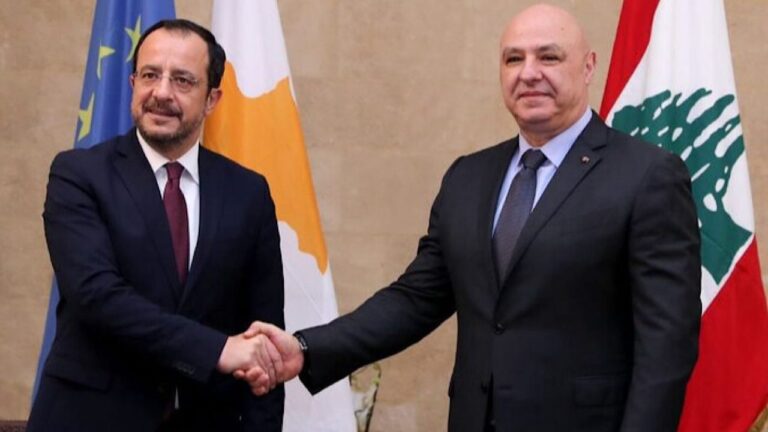
قال الخبير في شؤون الطاقة رودي بارودي في مقابلة حصرية مع LebTalks: “إن اتفاقية الحدود البحرية بين لبنان وقبرص خطوة رائعة وضرورية وتعطينا الأمل، لأنها لا تقتصر على تحديد أساس للتعاون بين الفريقين، بل تسهم أيضاً في تقليص المخاطر عليهما، وتُظهر للمنطقة والعالم مدى فاعلية الحوار والديبلوماسية”.
ولفت بارودي إلى أن “هذه الخطوة تُتوّج مساراً تأخر بلا داعٍ لما يقارب العقدين أذ كان مجمّداً منذ العام 2007، ما يجعل الإنجاز أكثر قيمة،معتبرا أن رئيس الحكومة نواف سلام وفريقه قاموا بدورهم من خلال دعم الاتفاق، لكن الفضل في تحريك الملف من الجانب اللبناني يعود بالدرجة الأولى إلى الرئيس عون، ولذلك يُعتبر هذا إنجازاً شخصياً له،وينطبق الأمر ذاته على الرئيس القبرصي نيكوس خريستودوليدس، فهذه محطة تاريخية للبلدين معاً”.
وعن أهمية هذه المعاهدة، أوضح بارودي أن “تسوية الحدود البحرية أمر بالغ الأهمية في الوقت الراهن، لأنها تفتح الباب أمام فرص جديدة، فالاتفاق يجعل لبنان أكثر جاذبية للشركاء الدوليين الكبار الذين يحتاج إليهم لتطوير قطاع النفط والغاز البحري الناشئ. وإذا تمكّن هذا القطاع من ان يحقق جزء بسيط من إمكاناته، فإن الفوائد ستصل إلى كل الاقتصاد اللبناني تقريباً، ما يجعل من هذا الاتفاق سبباً للاحتفال الوطني. والأمر نفسه ينطبق على قبرص“.
و هنّأ بارودي الحكومة اللبنانية على قرار منح حقوق الاستكشاف في البلوك البحري رقم 8 إلى ائتلاف دولي قوي وذو سمعة ممتازة يضم شركات توتال اينرجي الفرنسية وإيني الإيطالية وقطر للطاقة القطرية، لافتاً إلى أن هذين القرارين يمهّدان الطريق أمام مستقبل يصبح فيه لبنان دولة منتجة ومصدّرة للغاز، ما يوفّر زخماً غير مسبوق لاقتصاد في أمسّ الحاجة إلى كل دعم”.
لكن بارودي حذّر من أن الطريق لا يزال طويلاً أمام التنفيذ الفعلي، قائلاً: “الخطوة الأهم الآن هي المتابعة فعلى الحكومة أن تُنفّذ سلسلة من الإصلاحات المطلوبة منها، وأن تستثمر في بناء القدرات، وتُبقي على الكفاءات والخبرات لإدارة الموارد البحرية وصونها كما أن لبنان يحتاج إلى اتفاق لترسيم الحدود البحرية والبرية مع سوريا،و تحديد نقطة ثلاثية على ذلك الجانب بين لبنان وقبرص وسوريا،وهناك مؤشرات إيجابية مع الحكومة السورية الجديدة”.
وتابع بارودي قائلاً إن على بيروت أيضاً أن تضع خطة واضحة لتطوير قطاع النفط والغاز البحري: و”أغتنم هذه المناسبة لأقترح أن تبادر الحكومة اللبنانية فوراً إلى دعوة نظيرتها القبرصية للتفاوض حول اتفاق تطوير مشترك، ينظّم تقاسم أي موارد نفطية أو غازية مشتركة تقع على جانبي الحدود البحرية،فإبرام اتفاق بهذا الخصوص سيجعل قطاعي الطاقة البحريين في كلا البلدين أكثر جاذبية للمستثمرين”.
وختم بارودي بحماسة قائلاً: “هذه هي الأبواب التي فُتحت أمامنا بفضل اتفاق ترسيم الحدود البحري . لذا، مرة أخرى، نتقدّم بالشكر والتهنئة إلى الرئيس عون والرئيس خريستودوليدس على حكمتهما في السعي وراء هذا الاتفاق، وشجاعتهما في المثابرة حتى النهاية”.
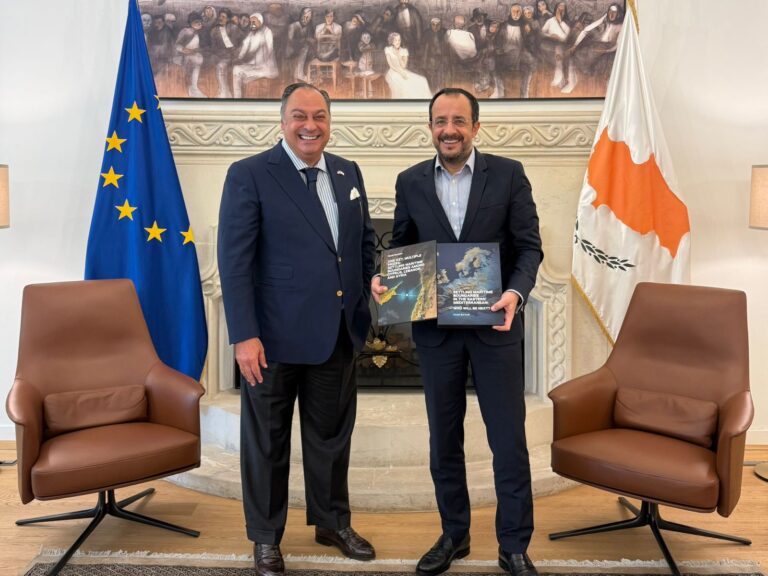
NICOSIA – 29, September 2025: Cypriot President Nikos Christodoulides met today with the international energy policy expert, Roudi Baroudi, who presented copies of his two latest books, “Settling Maritime Boundaries in the Eastern Mediterranean: Who Will Be Next?” and “One Key, Multiple Prizes: Settling Maritime Boundaries Among Cyprus, Lebanon, and Syria”.
Baroudi, a long-time advocate of dialogue, diplomacy, and peaceful development as the surest routes to greater stability for the entire Euro-Med region, said he felt “honored to have been received by the President.”
Christodoulides and his Lebanese counterpart, former General Joseph Aoun, agreed in July to have their respective teams negotiate and finalize a maritime boundary line (MBL). Both countries expect to derive numerous benefits from such a pact, and having treatied borders at sea will make it easier to attract the foreign investors required to develop their respective offshore oil and gas resources.
Reaching a deal “will open up all sorts of doors for Cyprus and Lebanon,” Baroudi said after the meeting. “The trends are going in the right direction, and not just vis-à-vis Lebanon. The President has ambitious foreign-policy plans, particularly with regard to Cyprus’ activities for the first six months of 2026, when it will hold the rotating presidency of the European Union.”
“I also took the opportunity to wish His Excellency every good fortune on that mission,” he added, “especially since it is expected to focus not only on shoring up Europe’s cohesion, but also on beefing up Cyprus’ role as a bridge between Europe and its neighbors.”
Indeed, Nicosia does have an ambitious agenda for its time in the presidency, and is working closely with Denmark, the current holder, and Poland, which will follow Cyprus’ term. The so-called “trio presidency” helps to ensure continuity from one presidency to the next.
Baroudi has published several books and studies on how existing United Nations tools can help coastal states to agree fair and equitable maritime boundaries, reduce tensions, and reap significant economic and social rewards in the bargain. He also has written and spoken publicly about a variety of opportunities for regional cooperation, from interconnected power grids and offshore wind farms to joint management of marine protected areas. In 2023, he was awarded the Transatlantic Leadership Award by the Transatlantic Leadership Network, a Washington think-tank, for what it described as “his valuable contribution in building a peaceful and prosperous Eastern Mediterranean.”
In addition to these works, ever since 2011, when the full potential of the East Med’s offshore hydrocarbon deposits began to emerge, Baroudi’s advocacy role has seen him provide thought leadership for a variety of projects and proposals that would transform Cyprus into a regional energy hub. In dozens of articles, studies, media appearances, and speaking engagements, for example, the industry veteran has made the business case for the island nation to become a gas processing and distribution center for its neighbors. This would include Cyprus hosting one end of an undersea gas pipeline to the European mainland, a liquified natural gas (LNG) plant that would be the country’s largest-ever project, and/or offshore floating storage and gasification units(s) to serve more distant customers by ship.
“All of these studies and the factors they highlighted are still relevant today,” Baroudi said. “Cyprus has the proximity, the land prices, and the relationships with its neighbors to make it everyone’s partner for energy exports, but also to serve as the bedrock for a stabler and more prosperous region.”

Israel’s strike on a residential building In Doha on Tuesday was a “cowardly, treacherous act of war” that “cries out” for stronger efforts to end the war, a prominent Lebanese expatriate said in a statement after explosions rocked the Qatari capital.
“This is an indefensible outrage, an unprovoked attack on a country that has done nothing but try to reduce tensions and help the region regain some semblance of stability,” said Roudi Baroudi, a high-profile executive, author, and energy expert who has spent years advocating for dialogue, diplomacy, and peaceful development across the Mena region.
“This country and its government have done everything possible to help end Israel’s continuing wars, mediating ceasefire talks since the beginning of the conflict in Gaza, also helping to end the brief but exceedingly dangerous clash between Israel and Iran, and using its good offices to reduce tensions on several other fronts as well. Qatar’s leaders and diplomats have worked tirelessly, arranging several possible off-ramps that would not only have helped to spare the Palestinian and other peoples, but also to give Israel a way out of the corner its prime minister has painted it into. The Israelis should be thanking Qatar for having played such a diplomatic constructive and selfless role,” he added.
“Instead, today, the Netanyahu government has carried out a cowardly, treacherous attack that cries out for the international community to finally step in and apply all the pressure at its disposal. History will not look kindly on a government that clearly seeks to prolong the war – and the suffering of the Palestinians and others – for no other reason than to keep itself in power . Those who fail to stand for the defenseless civilians who continue to die under Israeli bombardment and blockade will not escape the same historical judgment.”
“The madness has to end, and for that to happen, all states with any influence over Israel have to use it,” Baroudi stated. “It must be made unequivocally clear that no state can conduct itself in this manner without inviting a swift and painful response from the decent nations of this Earth: stop arming it, stop protecting it, stop funding it, stop trading with it – stop everything unless and until it starts behaving itself.” We need peace for all.
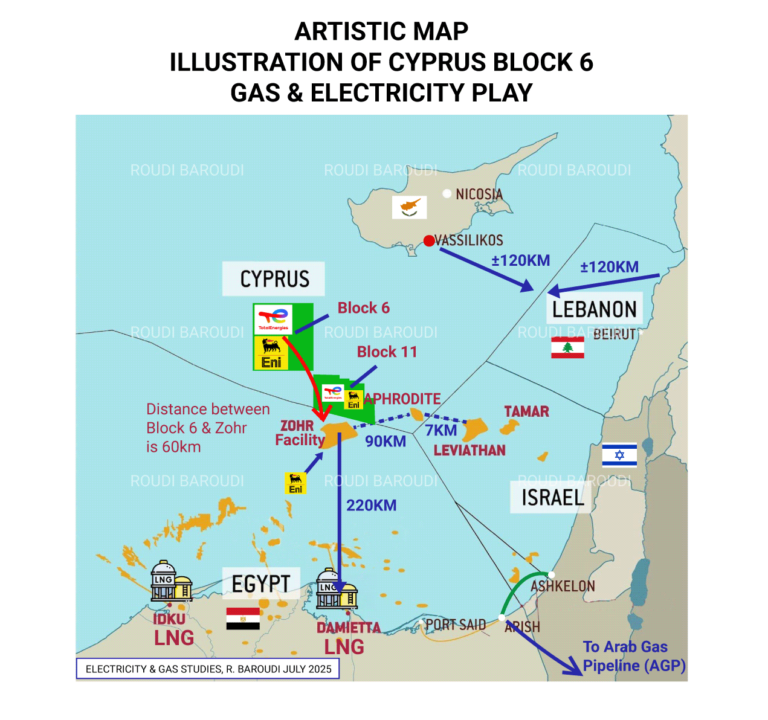
تبدو العلاقات اللبنانية القبرصية في حال تطور سريع وقد فتح هذا الباب رئيس الجمهورية العماد جوزاف عون فلاقى استجابة ورغبة عارمة لدى نظيره القبرصي كريستو دوليديس تجاه تطوير العلاقة بين البلدين الجارين وما لفت أن الرئيس القبرصي هو الذي بادر وطرح على الرئيس عون استجرار الكهرباء من قبرص إلى لبنان وقد تلقف رئيس الجمهورية اللبنانية هذه المبادرة وطلب من وزير الطاقة جو صدي متابعة الموضوع.
وفي هذا السياق أثنى خبير الطاقة الدولي رودي بارودي على مبادرة الرئيس القبرصي واللبناني، مؤكّدًا وجوب الترحيب بأي خطوة من هذا النوع باعتبارها نقطة انطلاق مهمة لتأمين الكهرباء للبنانيين وحل أزمة القطاع المستفحلة جزئياً منذ عقود وأن هذه الخطوة تأتي بعد الإعلان عن استئناف مفاوضات ترسيم الحدود البحرية بين البلدين.
كما أثنى بارودي على الدور الذي يلعبه الرئيس عون في ملف الطاقة ككل واعتباره أولوية لما فيه من فائدة على الاقتصاد وتعزيز القدرات الاجتماعية للمواطنين اللبنانيين.
ولفت بارودي إلى أن هذه الخطوة ستتيح تزويد لبنان ما بين 150 و300 ميغاواط وفق مراحل متعددة ولا سيما بعد عام أو عامين على الأكثر عندما تبدأ قبرص بإنتاج الكهرباء من الغاز المستخرج من حقولها البحرية خاصة حقل كرونوس الذي يديره كل من شركتي ENI & TOTAL ENERGIES ما يعزز تنويع مصادر الطاقة وبأسعار مقبولة لا سيما وأن الحقل المعني في قبرص لا يبعد عن حقل زهر المصري سوى ٦٠ كلم ما يعني أن كلفة الإستخراج ستكون مماثلة لتلك المعتمدة في الحقل المصري وهي كلفة رخيصة نوعا ما.
ولفت بارودي إلى وجود محطتين رئيسيتين لإنتاج الكهرباء في قبرص، إحداهما بين لارنكا وليماسول، والأخرى في Vassilikoبين ليماسول وبافوس، بقدرة إجمالية تقار ب 1600 ميغاواط من دون الكهرباء المنتجة من الطاقة الشمسية وبالتالي يمكن للبنان الاستفادة من هذه الطاقة بكلفة يتم التوافق عليها موضحا أن الكلفة ستكون اقل بكثير من كلفة الكهرباء المنتجة في لبنان عندما تبدأ قبرص العام المقبل باستخدام الغاز المستخرج من حقولها البحرية لإنتاج الكهرباء ولاسيما البلوك رقم 6.
بارودي طالب الحكومة اللبنانية بالإسراع بوضع الأطر الإصلاحية والتنظيمية للقطاع بشأن استجرار الكهرباء من قبرص وبإعداد دراسة جدوى اقتصادية تأخذ في الاعتبار كلفة الاستجرار ولفت أن محطة Vassiliko هي المحطة التي تصدر الغاز في 2026، على أن يواصل لبنان مساعيه لربط شبكته بالشبكة السورية للحصول على دعم إضافي كهربائي عن طريق محطة دير نبوح، بما في ذلك محطة الكسارة في منطقة البقاع.
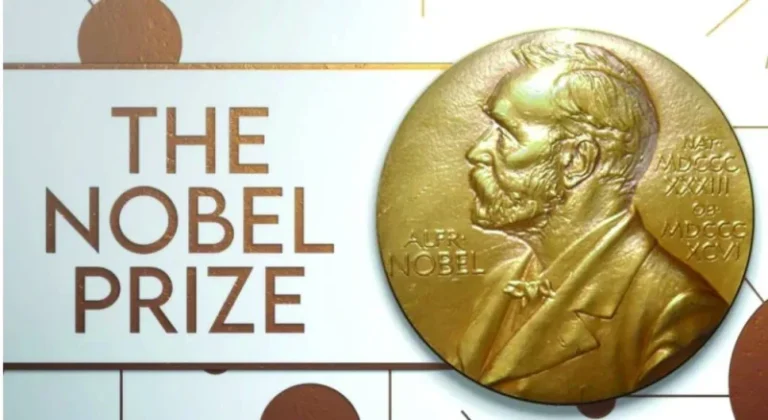
Most of the world is watching and waiting, hoping and/or praying that a hastily arranged ceasefire between Israel and Iran will hold. If it does, there will be sighs of relief virtually everywhere; if it does not, the State of Qatar should still be considered for the Nobel Peace Prize.
Yes, you read that correctly: even if the ceasefire that it helped to secure falls apart, Qatar should be considered for what many regard as the most prestigious prize on Earth.

I believe this because peace is more important than any other cause on Earth, and pound-for-pound, no country does more than Qatar to promote peace. Peace is more than a photo opportunity, more than a process that often allows belligerents to let their guns fall silent, more even than the gratitude of those whose lives and livelihoods are spared. It also serves other useful purposes, too, including as a commodity that promotes stronger growth and better socioeconomic development, and frees up resources for investment in education, healthcare, and transport infrastructure. Accordingly, achieving peace means more than simply not being at war: it means having the chance to better one’s own situation by leaps and bounds. By extension, anyone who provides such a chance to anyone else deserves deep admiration.
By this measurement alone, Qatar’s case for a Nobel is rock-solid – and has been for years, long before the world’s most powerful county asked it to obtain Iranian consent to a ceasefire. A quick glance at Qatar’s track record reveals a foreign policy focused almost entirely on the peaceful resolution of differences. Over the past quarter-century, Qatari diplomacy has helped to resolve or mitigate multiple crises, disputes, and conflicts in too many places to count, including Afghanistan, Darfur, Gaza, Eritrea, Iraq, Lebanon, Russia and Ukraine, Sudan and South Sudan, and Yemen. These feats have included the winding down of one all-out civil war and the prevention of another, the brokering of several exchanges involving thousands of prisoners/hostages, the securing of temporary cease-fires, the resolution of dangerous constitutional deadlocks, and – most importantly – the kindling of hope in the hearts of millions.
Not surprisingly, Qatar’s diplomatic corps is almost constantly and relentlessly engaged in one form or another of peacemaking. It does not always succeed, but its investments – both political and financial – in this mission pay dividends in other ways, too. Repeated successes are their own reward, but even “failure” both raises Qatar’s profile and reaffirms its commitment to dialogue and peace. In addition, both the leadership and the professional diplomats learn important lessons from each and every engagement, making Qatari intervention increasingly effective over time. Just as importantly, this increasing effectiveness contributes to Qatar’s growing reputation as an honest and capable broker, and that perception gives it still more influence, leverage, and flexibility going forward.
There are critics, of course. Many American officials, for instance, have criticised Doha for maintaining friendly relations with entities such as Hamas, the Taliban, and, indeed, the Islamic Republic of Iran. But when Washington and Paris wanted to end the presidential vacuum in Beirut, they turned to Qatar and other brotherly nations, which then helped to gain the acquiescence of Iran and Hezbollah. When Washington wanted to negotiate the release of Israeli soldiers and civilians held in Gaza, it was Qatar that made it happen. When the first Trump administration wanted a negotiated exit from Afghanistan, it was Doha that made the contacts and hosted the talks. And when the current Trump administration decided it was time for Israel and Iran to end hostilities, it was the Qataris who delivered the Iranians – and this despite the fact that Iran had just retaliated against US air strikes by lobbing missiles at a US air base inside Qatar!
In effect, the peninsula is now a platform for peace promotion, and not by accident. As impressive as they are, even Qatar’s obvious enthusiasm and evident aptitude for dialogue and diplomacy cannot account for the unprecedentedly large role it has come to play on the world stage.
Instead, today’s Qatar is the product of a bold strategy rooted in both purpose and principle. Led by His Highness the Amir Sheikh Tamim bin Hamad al-Thani, the country’s entire leadership views respect for international law and the maintenance of international peace and stability as existential objectives for Qatar and its population.
The Amir inherited some of this strategy from his father, but he has expansively built on it, adding both breadth of vision and depth of commitment. Even – and perhaps especially – when this approach has carried dire risks, His Highness the Amir has refused to waver, and his steadfast pursuit of fraternal relations among nation-states has continued. That resolve has been noted by state and non-state actors alike, and some former antagonists have even come to embrace and even emulate much of the Qatari approach.
That’s why Qatar deserves the Nobel Peace Prize. Not because it helped end a war between Iran and Israel, but because no other country is so singularly dedicated to peace. It’s the ideas behind its actions that make them special: that a country should not only refrain from seeking out conflict, should not only keenly avoid conflict unless necessary, but should also actively seek to prevent, shorten, and/or mitigate conflict among other countries as well.
What could be more noble – and therefore more Nobel-worthy – than that?

The long-feared war between Israel and Iran is now fully under way, and the repercussions threaten to include significant disruptions – not just for the two belligerents, but also for economies, peoples, and governments around the world.
To understand how and why an armed conflict between two regional powers could have such a widespread impact, start by considering the following:
1. Iran’s reserves of crude oil and natural gas are, respectively, the second- and third-largest in the world;
2. While Israel has posited Iran’s alleged nuclear activities as its reason for going to war, its strikes have also focused on Iran’s oil and gas infrastructure;
3. At the time of this writing, five of Iran’s nine major oil refineries had been hit and knocked out of service, along with storage depots and other facilities;
4. Israeli forces also started a huge fire at the South Pars gas field, which Iran shares with Qatar – and which holds almost as much gas as all of the other known gas fields on Earth.
5. For good measure, Iranian strikes against the Israeli refinery complex at Haifa have led to the shutdown of several offshore platforms, further crimping regional hydrocarbon output;
Now consider that it gets worse. The destruction or shutdown of Iran’s ability to extract, process, distribute, and export hydrocarbons would cause tremendous problems at home, and put upward pressure on prices everywhere, although the global impact would likely be manageable. The situation would be far more disruptive if Israeli attacks hit Bandar Abbas area. That could cause prices for gas – and other forms of energy – to soar on world markets.
And yet even this is not the greatest peril threatened by this war. That desultory honour goes to the possibility that traffic could be disrupted in the Strait of Hormuz, the relatively narrow channel that connects the Gulf to the open ocean. The passage is only 40 kilometres at its narrowest spot, wending for over 150 kilometres between Oman and the United Arab Emirates, to the west and south, and Iran’s Hormozgan Province to the east and north. Hormozgan is also home to the famous port city of Bandar Abbas, which hosts a giant oil and petrochemical complex that has already been struck at least once by Israeli forces.
What really matters for our purposes is that Hormuz also connects several other of the world’s most prolific oil and LNG producers – including Iraq, Kuwait, Qatar, and Saudi Arabia – to their overseas clients. As a result, every day, about a quarter of the world’s crude oil and LNG requirements exit the Gulf through Hormuz, making it the most strategically important chokepoint of our times. If this flow were halted or even significantly slowed, the consequences could be disastrous for much of the world. Although most of these exports are typically bound for markets in Asia, even a brief reduction in available oil and gas could send crude prices, currently a little more than $70 a barrel, shooting past $100 or even $120 in short order.
If such a supply crisis lasted any length of time, the global economy would enter uncharted territory. Not only would sky-high energy prices cause inflation to rise across the board, but fuel shortages could also be expected to cripple businesses of every size and sort. Transport and manufacturing, food processing and medical research, power generation, household heating and cooling, even the Internet itself: everything that depends on energy could slow to a trickle. A global recession would almost certainly ensue, and given the current trade environment, that might lead to another Great Depression.
So what might cause such an interruption? There are several possibilities, including the accidental sinking or crippling of a supertanker or two in just the right (i.e., wrong) place(s). Even if one or more accidents did not make Hormuz physically impassable, they could make insurance rates prohibitively expensive, causing many would-be off-loaders to decide against hazarding their ships amid the crossfire. Alternatively, Iran could decide to close the strait in order to punish the “international community” in general, for not doing enough to rein in the Israelis.
Whatever the rationale, the potential for global economic ruin – not to mention the ecological and public health risks posed by leaks of oil, nuclear materials, and/or other toxins into the environment – is simply not a risk that most intelligent people want to run. It therefore behooves those with the power to change the situation to do everything they can to end the conflict before its costs become more than a fragile world economy can bear.
Another is how to get Iran to behave itself, and that, too, shapes up as a difficult task. The Islamic Republic has spent most of the past half-century seeking to undermine US and Israeli influence over the region, and its substantial investments in proxy militias abroad and its own military at home may be skewing high-level decision-making. As the saying goes, when all you have is hammer, everything starts to look like a nail.
Despite these obstacles, it remains a fact that war is almost never preferable to negotiation. Iran and Israel agree on very little, their objectives are often in direct opposition to one another, and each views the other as a murderous and illegitimate state. Nonetheless, whether they realise it or not, both sides have a vested interest in ending the current conflict. Given the massive disparities in their respective strengths and weaknesses, this conflict could turn into a long-term bloodletting in which the value of anything achieved will be far outstripped by the cost in blood and treasure.
But who will get the two sides to so much as consider diplomacy when both of them are increasingly committed to confrontation? Although several world leaders have offered to act as mediators, the belligerents don’t trust very many of the same people. To my mind, this opens a door for Qatar, which has worked assiduously to maintain relations with all parties – and which already has a highly impressive record as a peacemaker – to step up in some capacity.
Whether it provides a venue for direct talks, a diplomatic backchannel for exchanging messages, or some other method, Doha has proved before that it can be a stable platform and a powerful advocate for peaceful negotiations. Let us hope it can do so again.
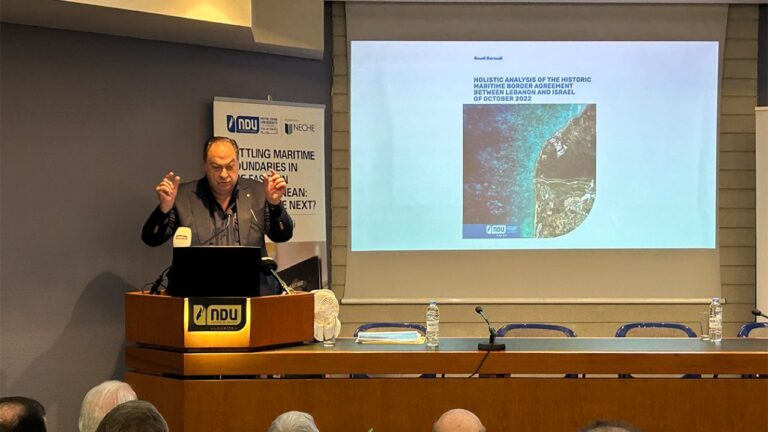
ZOUK MOSBEH, 23-04-2025: Energy expert Roudi Baroudi signed copies of his latest book during a launch event at Notre Dame University – Louaize on Wednesday.
The book, “Settling Maritime Boundaries in the Eastern Mediterranean: Who Will Be Next?”, is part of Baroudi’s years-long effort to promote regional energy cooperation. In it, the author makes the case that if East Med countries are serious about exploiting their offshore hydrocarbons, they need to settle their maritime borders in order to attract the major energy companies whose technical and financial muscle are virtual prerequisites for undersea oil and gas activities.
Co-hosted by the Office of NDU Publications (which published the book) and the university’s Office of Research and Graduate Studies, the signing event took place at NDU’s Pierre Abou Khater Auditorium. All proceeds from sales of the book will go toward Student Financial Aid at NDU.
Inspired by the landmark US-brokered October 2022 agreement that saw Lebanon settle most of its maritime boundary with old foe Israel, the new tome stresses the need to define other East Med borders as well, including those between Lebanon and Cyprus, Lebanon and Syria, Syria and Cyprus, Cyprus and Turkey, and Turkey and Greece.
Publication was delayed by the outbreak of the Gaza war in October 2023, but the author says that conflict – which also led to massive destruction and loss of life in Lebanon – only underlines the need for regional players to find a new modus vivendi.
“We can’t keep doing the same things over and over again, and then expecting a different outcome,” Baroudi said during the NDU event. “For the first time in many years, all of Lebanon’s branches of government – Parliament, Cabinet, and Presidency – are fully functional. We have to start thinking of ways to reduce the scope for friction, to open the way for foreign investment, and hopefully start producing offshore gas.”
“Almost all of Lebanon’s energy needs are met by imported hydrocarbons; imagine if we discover enough gas to provide 24/7 electricity to all Lebanese,” he added. “And what if we had enough to start exporting it, too? Lebanon’s coast is less than 100 kilometers from Cypriot waters: this means that once the island and its partners have built a pipeline and/or a liquified natural gas plant, Lebanese gas could flow straight into the entire European Union, one of the world’s largest energy markets. The possibilities are endless. And now imagine all of the countries of the region having similar prospects – just because they finally got around to figuring out where their national waters begin and end.”
In addition to the manifold benefits of energy security and lucrative export revenues to fund domestic investment in things like education, healthcare, fighting poverty, and transport, Baroudi said the exercise of negotiating sea borders could help build trust and good will.
“There isn’t enough of those commodities in the East Med region, and often for good reason,” he explained. “But we have to start somewhere, and maritime boundaries are a great place to do that because they open the way for investment and various forms of cooperation, direct or indirect, including fisheries monitoring and regulation, marine protected areas, tourism, weather forecasting, search and rescue, etc.”
With more than 47 years of experience, Baroudi has worked in multiple fields, from electricity, oil and gas, and petrochemicals to pipelines, renewables, and carbon pricing mechanisms. He also has led policy and program development with, among others, the World Bank, the US Agency for International Development, the International Monetary Fund, and the European Commission. The author of several books – including “Climate and Energy in the Mediterranean: What the Blue Economy Means for a Greener Future” (2022) – as well as numerous studies and countless articles, his expertise has made him a highly sought-after speaker at regional energy and economic conferences. Currently serving as CEO of Energy and Environment Holding, an independent consultancy based in Doha, he is also a Senior Fellow of the Transatlantic Leadership Network, a Washington think-tank. In 2023, he received the TLN’s Leadership Award in recognition of his efforts to promote peace.
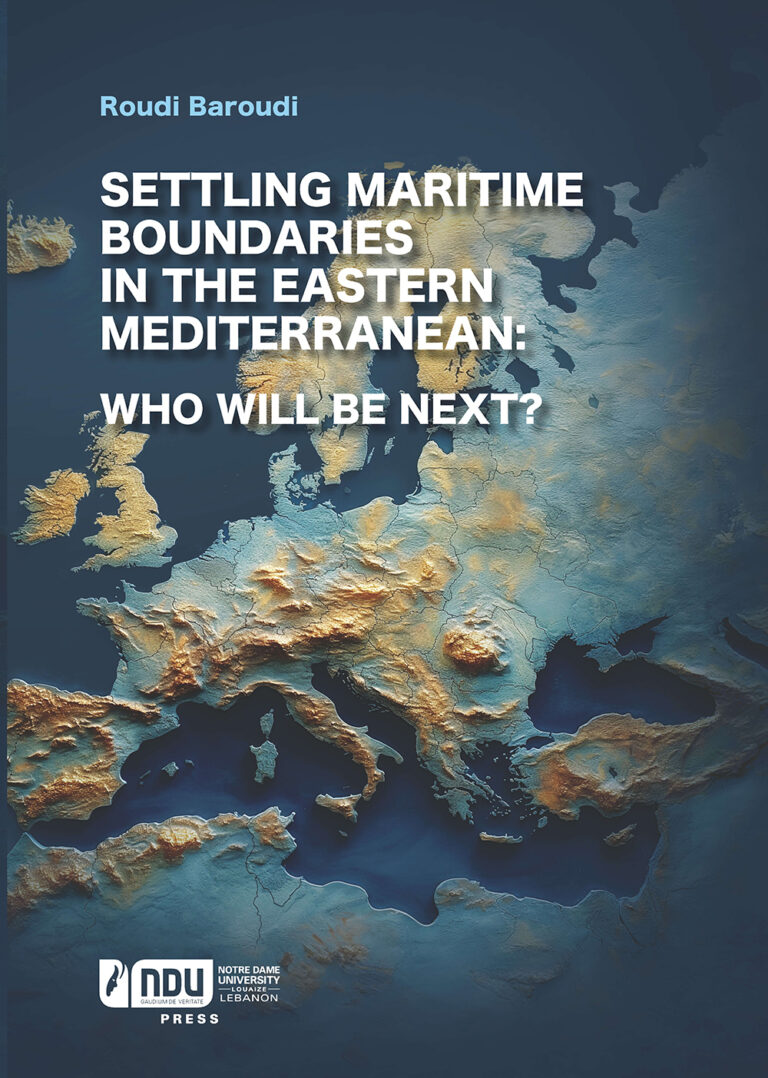
Recent weeks have been multiple contacts among several countries including – Cyprus, Greece, Lebanon, and Syria – aimed at increasing cooperation among East Mediterranean countries.
This flurry of diplomatic activity provides the perfect backdrop as Notre-Dame University – Louaize is pleased to announce that it will host a book launch and signing on April 23rd, welcoming international energy expert Roudi Baroudi as he releases his latest work, “Settling Maritime Boundaries in the Eastern Mediterranean: Who Will Be Next? ”
The book outlines the need for countries in the region to resolve their maritime boundaries, the energy and other economic opportunities that doing so could open up, and the legal, scientific, and technical means of ensuring that delimitation is fair and equitable. The volume even carries exclusive, high-precision maps indicating with unprecedented accuracy where the negotiated or adjudicated sea borders of several East Med countries would be, as per United Nations rules.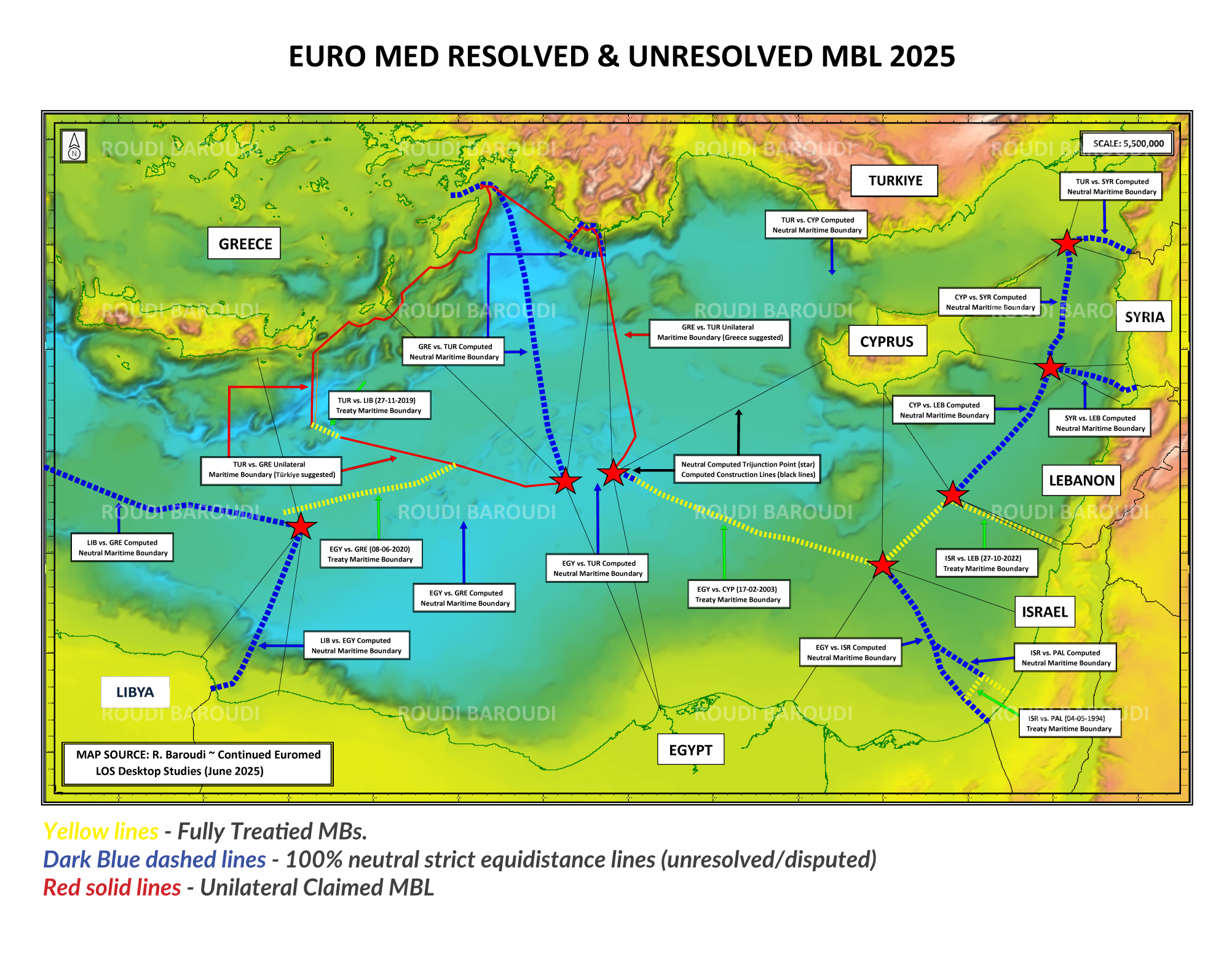
The book emphasizes that settling these unresolved boundaries – including those between Lebanon and Cyprus, Lebanon and Syria, Greece and Turkey, Turkey and Syria, Syria and Cyprus, and Turkey and Cyprus – is a necessary first step for those seeking to develop offshore energy resources. The advent of energy security and possible lucrative exports could have a profound effect on several states, allowing them to make historic investments in schools, hospitals, and transport infrastructure, all while creating well-paying jobs and reducing poverty and inequality. Baroudi also highlights a series of cross-border benefits, including reducing potential irritants between neighbors, building trust, and opening up new avenues for cooperation.
As a 47-year veteran of the energy industry, Baroudi has a wealth of experience to share, and does so frequently as an author and speaker, promoting energy as a catalyst for dialogue and peace wherever and whenever he can. He will be on hand for the launch at NDU’s Pierre Abou Khater Auditorium beginning at 12:00 noon, answering questions and signing copies of the book for anyone who purchases one.
All sale proceeds will go toward Student Financial Aid at NDU.